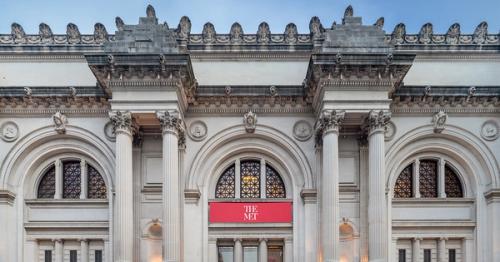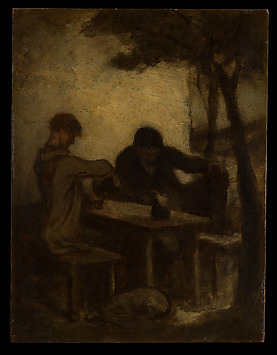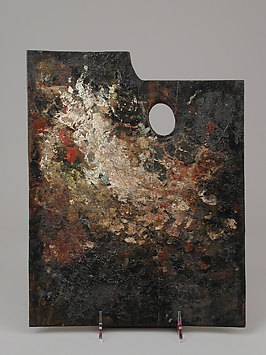Although his brief but productive career as a cabinetmaker in New York lasted a mere sixteen years, the French-born maître ébéniste Charles-Honoré Lannuier (1779–1819) was a leading figure in the development of a distinctive and highly refined style of furniture in the Late Federal period. A contemporary of the renowned master Duncan Phyfe, Lannuier, like him, made fashionable gilded card tables, marble-topped pier tables, bedsteads, and seating furniture for wealthy clients numbering among the mercantile and social elite of New York, Philadelphia, Baltimore, Richmond, and Savannah. Honoré, one of ten children, spent his formative years in France. From his much older brother Nicolas, a Parisian cabinetmaker who had attained the rank of master in 1783, he undoubtedly learned the "art and mystery" of cabinetmaking firsthand, honing His skills for a decade before departing for America in 1803. Not long after Honoré heralded his arrival with an advertisement in The New York Evening Post, he established his own workshop and wareroom at 60 Broad Street, and, by 1804, was listed in the New York City Directory. One of his most important commissions, seating furniture for the Common Council Chamber in New York's new City Hall among the most imposing 19th-century public buildings in the United States—would be completed in 1812 and much of it still remains in situ. Lannuier traded on his French background and the cachet that it implied with the handsomely engraved bilingual label that he applied to his finished pieces, which emphasized that he was transmitting directly to America the Greco-Roman revival style popularized in Republican and Early Empire France. This near-obsessive labeling of his work has permitted scholars to appreciate the extent of his considerable legacy of classical style furniture and its impact on the New York cabinetmaking establishment. While his career was cut short by his untimely death, at age 40, when he was at the height of his creative powers, Lannuier's reputation continues to this day. with documented examples of his furniture in the permanent collections of the foremost museums, including The Metropolitan Museum of Art, The Art Institute of Chicago, the Winterthur Museum, and The White House. This volume, which complements the exhibition "Honoré Lannuier, Parisian Cabinetmaker in Federal New York" held at The Metropolitan Museum of Art, New York, in spring 1998. represents the most complete study of Lannuier's life and work published to date. In four essays, profusely illustrated in color with overall views and details of Lannuier's finest creations. Ulrich Leben, deputy keeper Waddesdon Manor, Buckinghamshire, traces the little that is known of Lannuier's family and his origins in France; Peter M. Kenny, associate curator, American Decorative Arts, and administrator of The American Wing, The Metropolitan Museum of Art, explores Lannuier's years spent in New York (1803–19) and examines in depth the subject of connoisseurship with regard to Lannuier's known oeuvre; and Frances F. Bretter, research associate, American Decorative Arts, Department of American Art, The Metropolitan Museum of Art, discusses Lannuier's relationship to his various illustrious clients, and their pronounced "taste for the French style." In addition, the many fine black-and-white photographs highlight technical aspects of Lannuier's furniture, as well as comparable examples by his contemporaries. The Catalogue section that follows comprises about 125 documented works, arranged chronologically within specific categories, and contains information about materials and provenance, and collection and publication history, for each item. An Appendix provides transcriptions of legal documents, including invoices and Lannuier's marriage contract and will; the last two, in their original form, are on deposit in lower Manhattan. A Selected Bibliography and an Index complete this portrait of a creative and individualistic designer, who, in striving to transmit the "style antique" from France to America, prized novelty and innovation in tandem with craftsmanship of the highest caliber.















